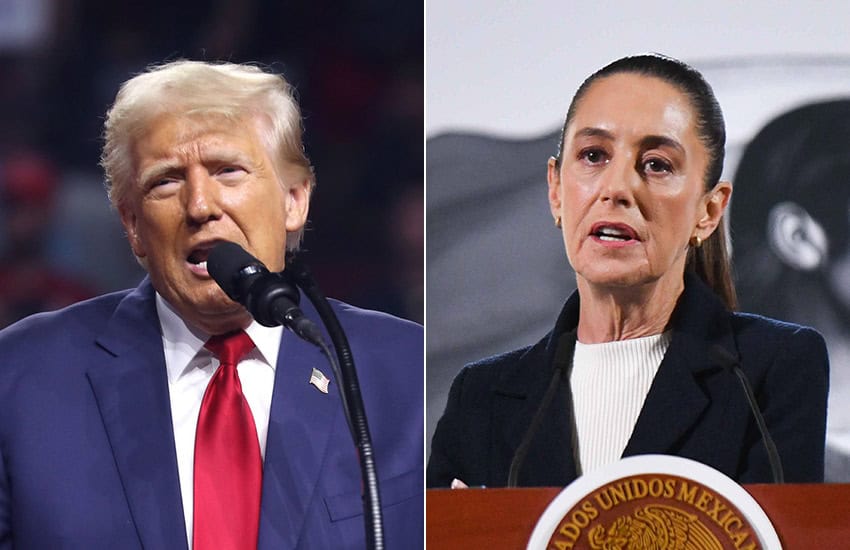As of publication mid-day Saturday, Feb. 1, there has been no official announcement from Trump regarding tariffs on Mexican products.
I will avoid sharing my opinion in my column today regarding President Trump as a businessman, leader or politician. Whatever I would say here would result in half of readers enthusiastically agreeing with me and the other half most certainly harshly criticizing me. That’s not my intention here. What I can say with confidence is that I think Trump is a very shrewd and effective negotiator. Let me explain.
There are several different types of well-documented, effective negotiating strategies. However, over my nearly 30-year business career, I have often found that it is the person that is doing the negotiating that matters as much as the actual negotiating strategy. If the person on the other side of the table is (or appears to be) unwilling to compromise, very aware that they have a sizeable advantage, willing to walk away or willing to do something unthinkable or crazy, it makes for an extremely difficult negotiating situation for the other party.

Early in my career, I worked for a smaller-sized company that had annual revenue under US $200 million. We had a very large customer with annual revenue over US $20 billion — over 100 times larger than us! To make matters more complicated, this customer represented a very large percentage of our total revenue. Negotiations with this customer were a nightmare because they knew that at the end of the day, they could demand almost anything and we would have to give in. Unfortunately, the culture of that company was to extract whatever they could from their suppliers in nearly every negotiation. It was a true David versus Goliath situation every time a new deal came up — and sure, David can win once or twice, but not on a regular basis. They can and did get the best of us every chance they could. Some companies and their negotiating employees use this power lightly, respecting the smaller company — others do not.
A similar asymmetry exists between the U.S. and Mexico. The United States economy is almost 15 times larger than Mexico’s. Mexico sends nearly 80% of it’s exports to the United States. Talk about a David versus Goliath negotiation! To make matters more difficult for Mexico, Trump has demonstrated himself to be the type of negotiator who is willing to use any and all negotiating tools at his disposal to get what he wants. Needless to say, that puts Sheinbaum in a difficult spot. So how could this play out?
Trump is pushing Mexico in five key areas, each of which represent a negotiating opportunity for both sides. He wants Mexico to:
1. Curb the flow of migrants at the southern border.
2. Crack down on the cartels and curb the flow of drugs to the U.S.
3. Receive Mexican nationals who will be deported from the United States.
4. Crack down on Chinese investment in Mexico.
5. Stop the flow of Chinese vehicles into Mexico.

He is clearly using the threat of tariffs on Mexican exports to the United States to pressure Sheinbaum into doing what he wants in each of these areas (as we saw last week with Colombia). Trump has put so many demands on the table, and given the above-mentioned asymmetry of the negotiation, it naturally puts Sheinbaum and her team on the defensive. Mexico would like to stop the flow of U.S. guns into Mexico and obviously avoid tariffs from the U.S., but beyond that is not making any significant demands of the United States. Fortunately for Mexico, tariffs on Mexican exports to the US is likely something that would hurt the U.S. economy as well — no matter what Trump says.
Here is what I think will ultimately happen: Look for Mexico to show some significant steps and progress in each of the five key areas. In fact, in each one of them, Sheinbaum’s administration has already taken some initial steps and more tangible actions than her predecessor. This will be noticed and should be well-received by the new U.S. administration. She also has shown that she is smart, tough, charming and very likeable. From my experience, this will help her tremendously in the negotiation.
To avoid inflation risks in the United States, any tariffs that ultimately are applied against Mexico will likely be very targeted, much smaller than threatened, and short term. The threat will, however, push Mexico to take even more action in each of the key areas while at the same time not causing too much tariff-related pain on either side of the border.
Sheinbaum’s administration has been doing a good job pointing out the deep interconnectedness of both economies and its benefits, as well as the risk that tariffs could stoke inflation. The arguments have been presented in a calm, fact-based and objective manner. This has been an important strategy, but in this case pure, rational logic likely will not be enough. She needs to give “wins” to the Trump administration on each of the five areas that they can tout to the American people.
In summary, I think that Mexico will continue to take actions and make some progress in each of the five key areas. As a result of this, and due to the risks of economic damage to the U.S. that would come from tariffs on Mexican goods, I do not think that the U.S. will impose any long-term, serious or substantial tariffs on Mexico. It will not be an easy or smooth ride for Mexico over the next year, but I am convinced that what will come out of this negotiation will be an increased level of dialog, coordination and cooperation between the two countries on many issues and an unprecedented amount of new investment and growth in the years to come.
Travis Bembenek is the CEO of Mexico News Daily and has been living, working or playing in Mexico for nearly 30 years.
